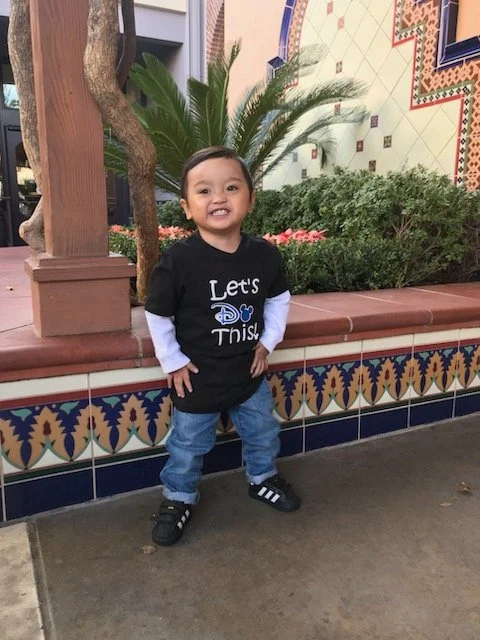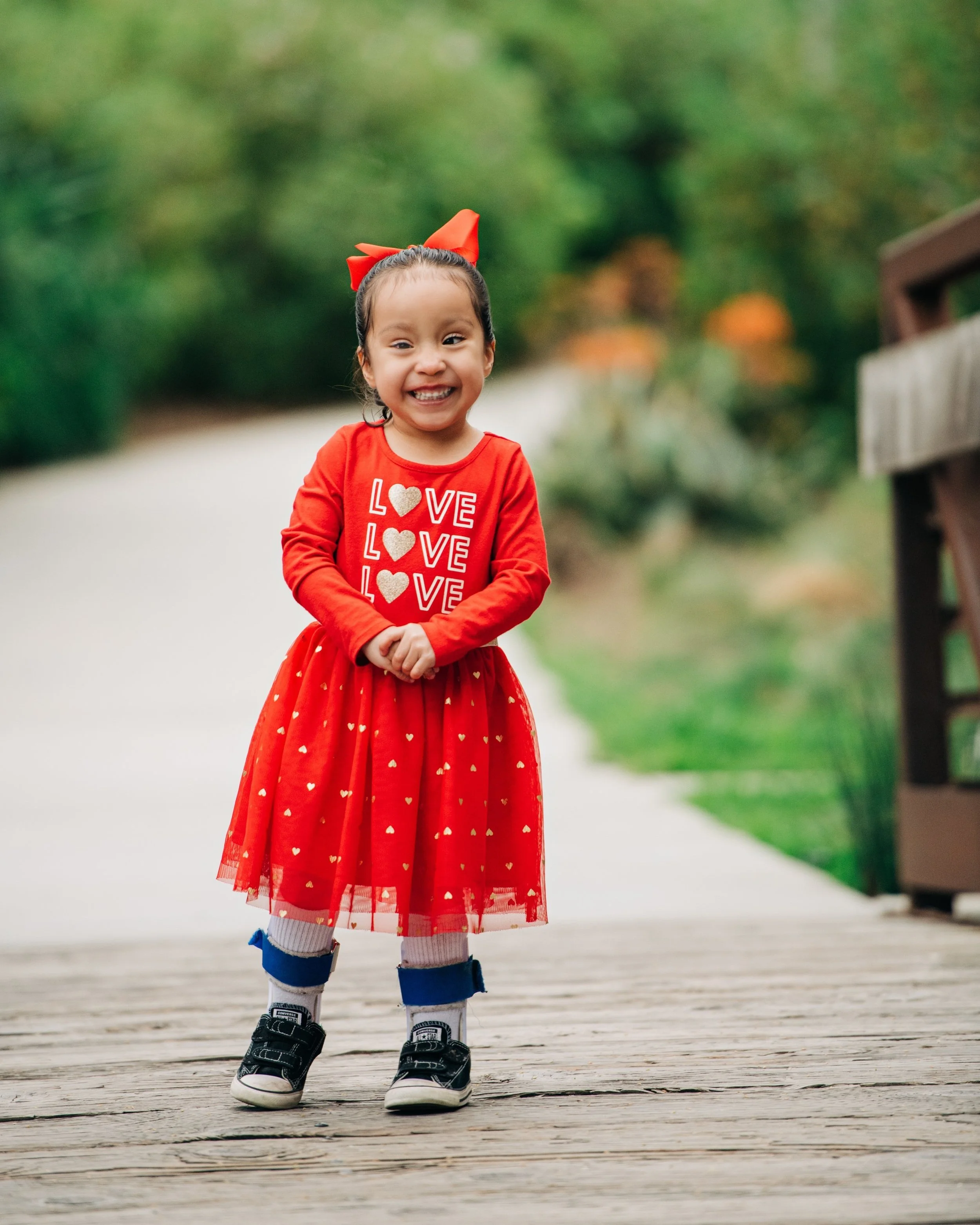Meet Marlee Jo, Your Summer Scamper Patient Hero
“Little nugget” and cancer warrior princess
By Lynn Nichols
On any given Sunday, you can find Marlee-Jo, age 5, and her family going round and round the lazy river at the waterpark near their home in Santa Maria, California. The family has been making up for lost time by soaking in summer days.
“Last summer, we enjoyed all of the things we couldn’t do for the past year,” says Joe, Marlee-Jo’s dad. “We realized that happiness is a part of healing. The Stanford team showed us that.”
Marlee-Jo had a rare form of childhood cancer called rhabdomyosarcoma (RMS), a soft tissue cancer named after the type of cells that it starts in—rhabdomyoblasts. Only about 350 children each year in the United States develop RMS. Because it’s so rare, it can be hard to catch early. Marlee-Jo’s cancer presented itself with fatigue, headaches, and eventually a worrisome mass in her thigh.
“Marlee-Jo was referred to us by a surgeon near her home when she was 2 years old. Given the concern that the mass in her thigh was cancer, she was seen by both myself and our orthopedic surgical oncologist, Dr. Robert Steffner, who did a biopsy. This confirmed the diagnosis of RMS,” says Jacquelyn Crane, MD, a pediatric oncologist at Lucile Packard Children’s Hospital Stanford who treated Marlee-Jo.
Pediatric oncology experts with the Bone & Soft Tissue Tumors Program then took a bone marrow sample and performed imaging tests to see if the cancer had spread beyond her thigh. Unfortunately, it had. Marlee-Jo’s cancer was stage 4, the most advanced that it gets.
“With such a difficult, rare type of cancer, it’s vital to receive care from a specialized sarcoma team—something that our large pediatric cancer center here at Stanford is fortunate to offer,” Dr. Crane says.
Marlee-Jo was cared for by a large team of specialists, including a pediatric oncologist, an orthopedic surgeon, and a radiation oncologist who are all experts in bone and soft tissue cancers, along with their specialized team of nurses and therapists. They all worked together to tailor care to Marlee-Jo’s needs. Beating pediatric cancer demands the right treatment at the exact right time.
“Her cancer had spread to her lymph nodes, bones, and bone marrow. So, we started her on chemotherapy,” Dr. Crane says. “We saw significant shrinkage of her tumor within a few months, but she still needed additional chemotherapy as well as radiation.”
Akilah Burford, MSW, a social worker dedicated to cancer patients, worked closely with the family to care for their every need. She clearly remembers the moment when the whole team and the family learned that the tumor in Marlee-Jo’s thigh was gone.
“That was a special moment for all of us and a huge win for the family. She was all set to have surgery to remove the tumor, but there was no tumor,” says Burford.
While that was great news, radiation to the thigh was still needed, and the cancer had to be eliminated throughout the rest of her body, requiring over a year of treatments with further chemotherapy and radiation.
Marlee-Jo’s parents recall a time during chemo treatments when Marlee-Jo was very sick. She was losing weight fast, and they were afraid that they would lose her.
“At that point, we asked the doctors how long she had to live, and if we should take her home and simply enjoy the rest of her life,” Joe says.
Marlee-Jo was close to needing a feeding tube, but a nutritionist on the cancer team helped her start eating again. Marlee-Jo’s parents advocated for her to receive homeopathic appetite stimulants. The medical team agreed, which they really appreciated.
“The doctors at Stanford Children’s Health are brilliant and top of the line. They are the best at dealing with childhood cancer. We advocated for Marlee-Jo and they trusted us. And we trusted them,” Renee says.
Marlee-Jo had chemotherapy for five months, then radiation on her thigh, then chemotherapy again, followed by additional radiation. Chemotherapy and radiation work in tandem to attack and kill cancer cells.
“There are several life stages of cancer cells. With radiation we time it so that we hit the cells at just the right point in their life cycle,” says Karim Aref, a radiation therapist who cared for Marlee-Jo, calling her one of his favorite “little nuggets.”
The radiation oncology team does their best to make treatments fun for kids. Marlee-Jo loved driving the team’s miniature Mercedes through the hallways before and after treatment, and Aref would make her Sonic the Hedgehog hands out of surgical gloves. Kids can wear cool Avatar-like masks during treatments and special wigs when they lose their own hair. Marlee-Jo picked a wig of a Disney princess, of course.
Despite all she has been through, Marlee-Jo calls the doctors and nurses at the hospital her “best friends.” She says she was “brave and strong,” just like one of her favorite Disney characters, the warrior princess Raya from Raya and the Last Dragon.
Besides great medical care, the team helped the family manage other life worries and demands. Many parents who endure cancer treatments for their child are pulled away from work and home and need extra help. Burford, their social worker, was a treasure trove of endless support and resources. Thanks to generous donor support, our Social Work team can provide families with gas cards, meal vouchers and other helpful items.
“Marlee-Jo’s my little princess. We thought we had lost her at one point, but she is back,” Joe concludes. “It took everyone to heal her. The community at Stanford and our own community. It was humbling to learn how many people were out there that wanted to help us. We are so grateful.”
We can’t wait to see Marlee-Jo cross our Summer Scamper kids’ fun run finish line this summer, and we hope you’ll be there to cheer her on, too!
By Lynn Nichols




